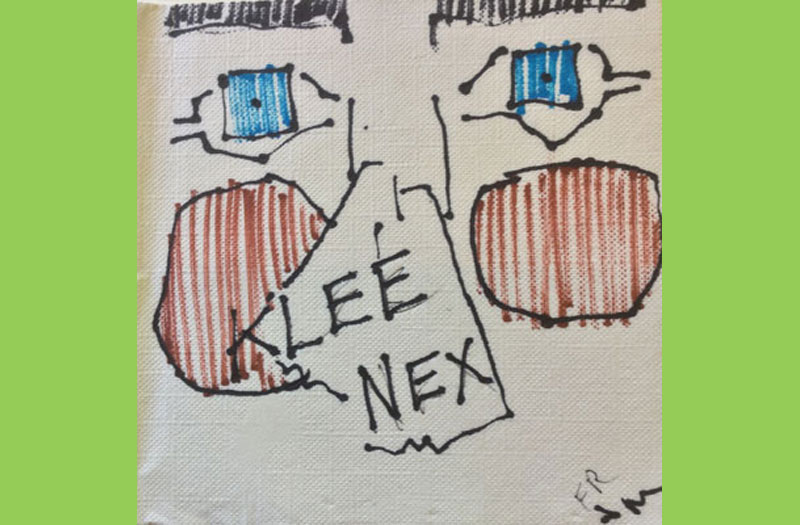Election Day, November 5th, looms ahead. Some fear armageddon. Others look forward to a golden age. Voters are divided into teams. We view the future through different colored glasses, red or blue, and we choose an elephant or a donkey for our mascot.
Path dependence is a concept in the social sciences referring to processes where past events or decisions constrain later events or decisions. For example,
QWERTY is the first six letters of the top row of the standard keyboard layout. It’s on your computer keyboard and your smartphone and your typewriter if you are old enough to still have one. No one knows how it originated. The puzzle has been frustrating historians for over a century. Because it was on the first typewriter it simply became the standard. That’s path dependence.
Elephants and donkeys have been political party mascots for over a century in large part due to Thomas Nast who is considered the father of the modern political cartoon. (Think in the Morning had the privilege of meeting a member of the Nast family—click on This Link.)
The Republican party was more abolitionist and pro-diversity than the Democrats. In the 1960s after Johnson passed the Civil Rights Act and Nixon followed a southern strategy to get elected, the party’s attitudes toward diversity flipped and the Democrats focused more on racial diversity than the Republicans. Over the years Congress has seen the diversity of members increase with the largest numbers of women and nonwhites in the Democratic party
How the colors became attached to particular political parties is a bit more complicated.
In 1976, NBC used its first on-air election map and the bulbs turned red to designate states won by Democratic nominee Jimmy Carter and blue to designate states won by Republican nominee Gerald Ford. However, party colors changed with the election of the new millennium and its drawn-out conclusion – which ended in mid-December that year with Republican George W. Bush being declared the official winner over Democrat Al Gore. That was the first year USA TODAY published its full-color election map, and the same is true with The New York Times. That year, The New York Times and USA Today published full-color electoral maps with Republican states red and Democratic states blue.
Using blue for a left-leaning party and red for a right-leaning party makes the United States odd among other nations, which often associate red with political parties on the left and blue with conservative parties. For example, the Conservative party in the United Kingdom uses blue, while the Labour party is symbolized by a red flag.
Many today feel the divisions between red elephants and blue donkeys has increased to a dangerous level. Thinkers as diverse as Lao Tzu, Isaac Newton, Abraham Lincoln, Antonin Scalia and William Blake have all emphasized in their own way that division is weak and untenable in the long run of a country’s existence. As we move toward November 5th, each rooting for our own principles as we should, it will serve us well to remember Lincoln’s words that a house divided against itself cannot stand.
“If you can’t disagree ardently with your colleagues about some issues of law and yet personally still be friends, get another job, for Pete’s sake,” Scalia once said of his friendships with colleagues. Former Supreme Court Justice Antonin Scalia quoted in: 9 Political Friendships Proved Party Lines Don’t Have To Divide Americans, Grace Panetta
In the 1660s, English physicist and mathematician Isaac Newton began a series of experiments with sunlight and prisms. He demonstrated that clear white light was composed of seven visible colors including red and blue. Newton said: “If the Sun’s Light consisted of but one sort of Rays, there would be but one Colour in the whole World.”
William Blake reminds us that colors are the wounds of light. Colors are literally formed by breaking apart white light. Differences are not only beautiful but they are necessary. Without contraries there is no progression.
Everybody on earth knowing that beauty is beautiful makes ugliness. Everybody knowing that goodness is good makes wickedness. For being and nonbeing arise together; hard and easy complete each other; long and short shape each other; high and low depend on each other; note and voice make the music together; before and after follow each other. That’s why the wise soul does without doing, teaches without talking. The things of this world exist, they are; you can’t refuse them. To bear and not to own; to act and not lay claim; to do the work and let it go: for just letting it go is what makes it stay. Lao Tzu, Chapter 2 (Ursula K. Le Guin translation)
Vote. And remember, whether red or blue, elephant or donkey we are all Americans and we have to find a way to live together or die alone.


In this three-dee universe,
I can never see myself coming
Or going,
Unless I am good with walking
Into a shattering mirror.
What you said, brother.
“We must all hang together or we shall hang separately.” – Ben F.